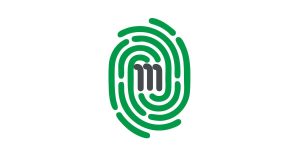
On August 26, 2016, the FASB issued an update to their guidelines and standards for handling cash flow issues in accounting. You can view the actual PDF of this update in the link below.
Accounting Standards Update No. 2016-15, Statement of Cash Flows (Topic 230): Classification of Certain Cash Receipts and Cash Payments, includes specific guidance on eight cash-flow classification issues.
The issues addressed in this standards update include the following:
1. Debt prepayment or extinguishing of debt costs. Cash payments for debt prepayment or the extinguishing of debt costs should be classified as cash outflows for financing activities.
2. Settlement of zero-coupon debt instruments or other debt instruments with coupon interest rates that are insignificant in relation to the effective interest rate of the borrowing. At settlement, the issuer should classify the portion of the cash payment attributable to the interest related to the debt discount as cash outflows for operating activities, and the portion of the cash payment attributable to the principal as cash outflows for financing activities.
3. Contingent consideration payments made after a business combination. Cash payments not made soon after the acquisition date of a business combination by an acquirer to settle a contingent consideration liability should be separated and classified as cash outflows for financing activities and operating activities. Cash payments up to the amount of the contingent consideration liability recognized at the acquisition date should be classified as financing activities. Any excess should be classified as operating activities. Cash payments made soon after the acquisition date of a business combination by an acquirer to settle a contingent consideration liability should be classified as cash outflows for investing activities.
4. Proceeds from the settlement of insurance claims. Cash proceeds received from the settlement should be classified on the basis of the related insurance coverage (the nature of the loss). For insurance proceeds that are received in a lump-sum settlement, an entity should determine the classification on the basis of the nature of each loss included in the settlement.
5. Proceeds from the settlement of corporate-owned life insurance policies, including bank-owned life insurance policies. Cash proceeds received from the settlement should be classified as cash inflows from investing activities. The cash payments for premiums on corporate-owned policies may be classified as cash outflows for investing activities, operating activities, or a combination of investing and operating activities.
6. Distributions received from equity-method investees. When a reporting entity applies the equity method, it should make an accounting policy election to classify distributions received from equity-method investees using either the cumulative earnings approach or the nature-of-the-distribution approach.
7. Beneficial interests in securitization transactions. A transferor’s beneficial interest obtained in a securitization of financial assets should be disclosed as a noncash activity, and cash receipts from payments on a transferor’s beneficial interests in securitized trade receivables should be classified as cash inflows from investing activities.
8. Separately identifiable cash flows and application of the predominance principle. The classification of cash receipts and payments that have aspects of more than one class of cash flows should be determined first by applying specific guidance in US GAAP. In the absence of specific guidance, an entity should determine each separately identifiable source or use within the cash receipts and cash payments on the basis of the nature of the underlying cash flows. An entity should then classify each separately identifiable source or use within the cash receipts and payments on the basis of their nature in financing, investing, or operating activities.
In situations in which cash receipts and payments have aspects of more than one class of cash flows and cannot be separated by source or use, the appropriate classification should depend on the activity that is likely to be the predominant source or use of cash flows for the item.
The amendments apply to all entities, including both business entities and not-for-profit entities that are required to present a statement of cash flows under Topic 230, Statement of Cash Flows.
The standard goes into effect for public business entities for fiscal years beginning after Dec. 15, 2017, and interim periods within those fiscal years. For all other entities, the standard takes effect for fiscal years beginning after Dec. 15, 2018, and interim periods within fiscal years beginning after Dec. 15, 2019.
Early adoption is permitted, including adoption in an interim period. If an entity early adopts the standard in an interim period, any adjustments should be reflected as of the beginning of the fiscal year that includes the interim period. An entity that elects early adoption is required to adopt all of the amendments in the same period.
Another great way to help your company handle cash flow is to obtain our PDF converter software, which helps streamline your accounting by converting bank statements in the click of a button.

















Add comment